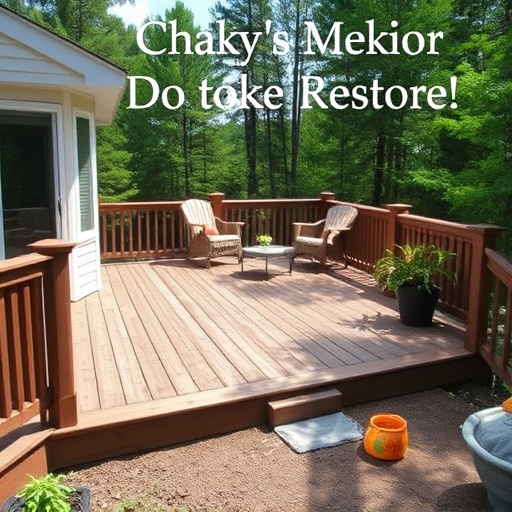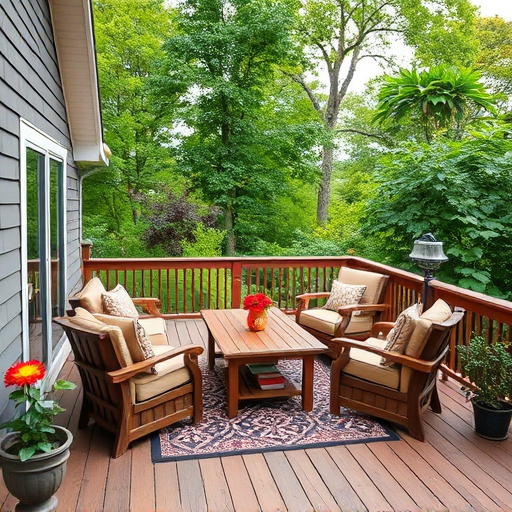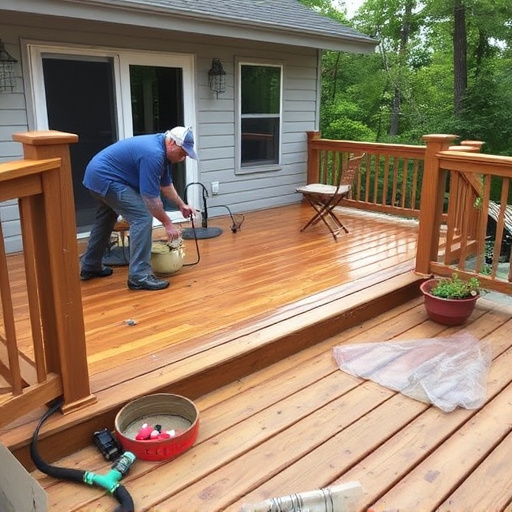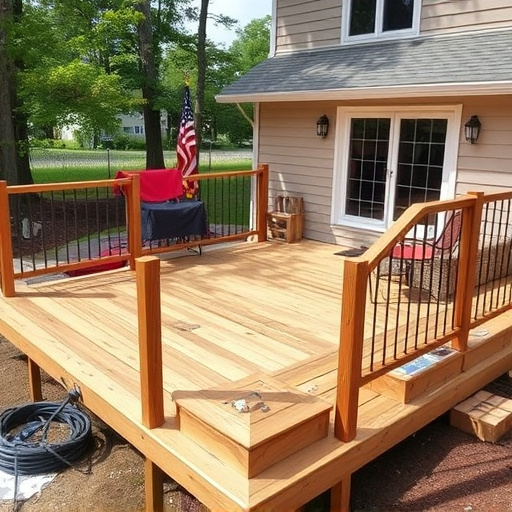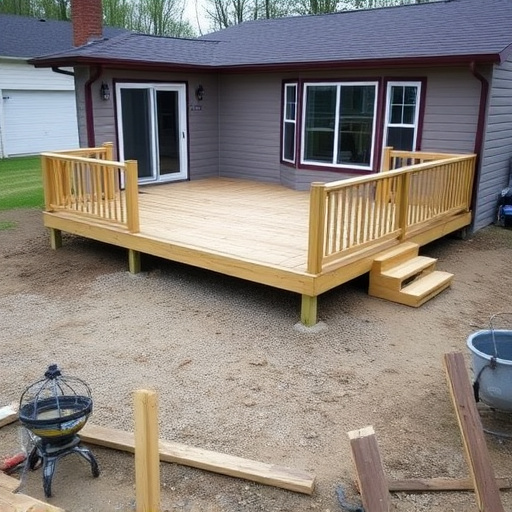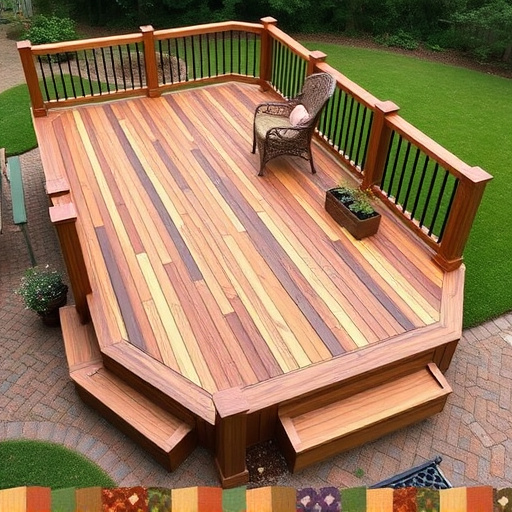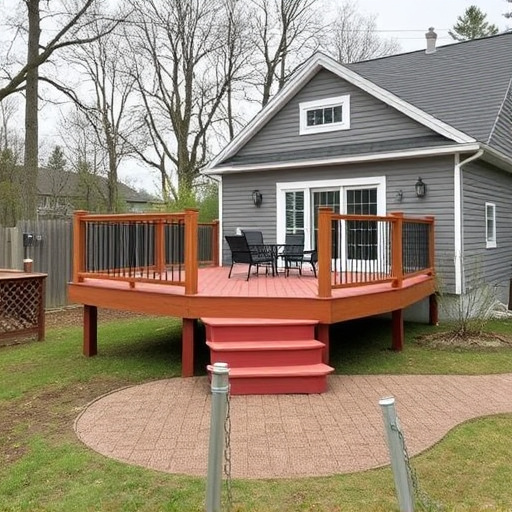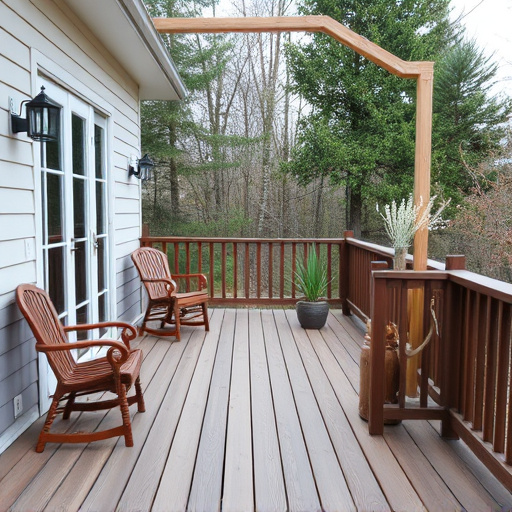The choice between natural wood and composite deck materials hinges on aesthetics, tactile appeal, and durability. Wood offers a rustic, organic look but needs extensive maintenance, while composite provides low-maintenance durability and a range of styles. Modern deck materials like composite, vinyl, stone, and concrete offer enhanced durability, customization, and value for contemporary preferences, catering to diverse tastes through professional home exterior services.
When it comes to decking, choosing the right material can transform your outdoor space. This article delves into the natural look and feel of various deck materials, specifically contrasting wood with composite options. We explore textured surface differences, durability concerns, and aesthetic appeal, from traditional to modern materials. Whether you’re a homeowner or contractor, understanding these distinctions will help navigate the vast array of deck materials available in today’s market.
- Exploring Textured Surface Differences: Wood vs Composite
- Durability: Natural Wood vs Man-Made Alternatives
- Esthetic Appeal: Traditional vs Modern Deck Materials
Exploring Textured Surface Differences: Wood vs Composite

When comparing deck materials, one key aspect to consider is the textured surface. Wood and composite decks offer distinct tactile experiences that can significantly impact the overall look and feel of a home’s exterior. Natural wood presents a warm, rustic touch with its uneven grains and subtle imperfections, appealing to those seeking an authentic outdoor ambiance. The surface of a wooden deck invites you to run your fingers along its coarse texture, connecting you with the natural elements.
In contrast, composite deck materials mimic the appearance of wood but offer a more uniform, man-made texture. These surfaces are designed to withstand harsh weather conditions and maintain their visual appeal over time. While they may lack the organic feel of wood, composites provide a low-maintenance alternative for homeowners seeking long-lasting home exterior services, including siding replacement or commercial roofing solutions. The smooth, synthetic surface requires less upkeep but might feel slightly colder underfoot compared to a wooden deck.
Durability: Natural Wood vs Man-Made Alternatives

When comparing deck materials, durability is a key factor for any homeowner. Natural wood has long been the traditional choice for decks, offering a timeless aesthetic appeal. However, it’s important to note that wood requires regular maintenance, such as staining and sealing, to withstand the elements. Over time, exposure to sunlight, moisture, and pests can cause wood to rot, warp, or crack, necessitating frequent repairs or even full deck replacement.
In contrast, man-made deck materials, often referred to as composite decking, offer superior durability. These alternatives are designed to mimic the look of wood while providing enhanced longevity. Composites are made from a blend of wood fibers and plastic, making them resistant to rot, decay, and insect damage. While initial installation costs for natural wood decks might be lower, considering long-term roofing solutions like composite decking can save homeowners money over time due to reduced maintenance and extended lifespan, which even the best roofing services or roof consulting firms would attest to.
Esthetic Appeal: Traditional vs Modern Deck Materials
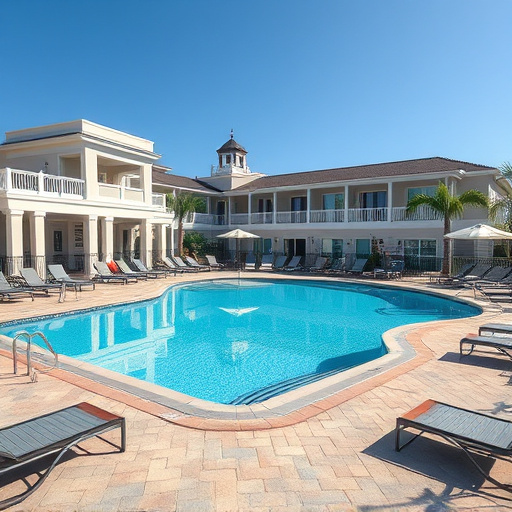
When it comes to the aesthetic appeal of deck materials, traditional options like wood have long been the go-to choice for their natural beauty and ability to enhance outdoor living spaces. The warmth and texture of wooden decks create an inviting atmosphere that seamlessly blends with surrounding landscapes, offering a classic look that stands the test of time. However, modern deck materials have emerged as game-changers in the industry, providing an array of innovative alternatives that cater to contemporary tastes.
Today’s market offers a diverse range of options, from composite and vinyl to stone and concrete. These modern materials boast not only durability and low maintenance but also a wide array of colors, textures, and styles to suit various design preferences. While traditional wood maintains its timeless charm, modern deck materials offer a fresh aesthetic that can transform a home exterior into a stylish retreat. For those seeking a balance between classic appeal and contemporary design, many professional home exterior services provide expert advice and installation for creating a visually stunning and functional outdoor space using these diverse deck materials, ultimately enhancing the overall value of exterior home improvements.
When comparing deck materials, the choice between natural wood and composite options goes beyond aesthetics. While natural wood offers a classic, timeless look and feel, composites excel in durability and low maintenance. For modern decks seeking a unique, low-upkeep option, composite materials are the way to go. Yet, traditionalists may still prefer the authentic charm of real wood. Ultimately, the best deck material depends on individual preferences, as both have their distinct advantages and contribute to enhanced outdoor living spaces.




